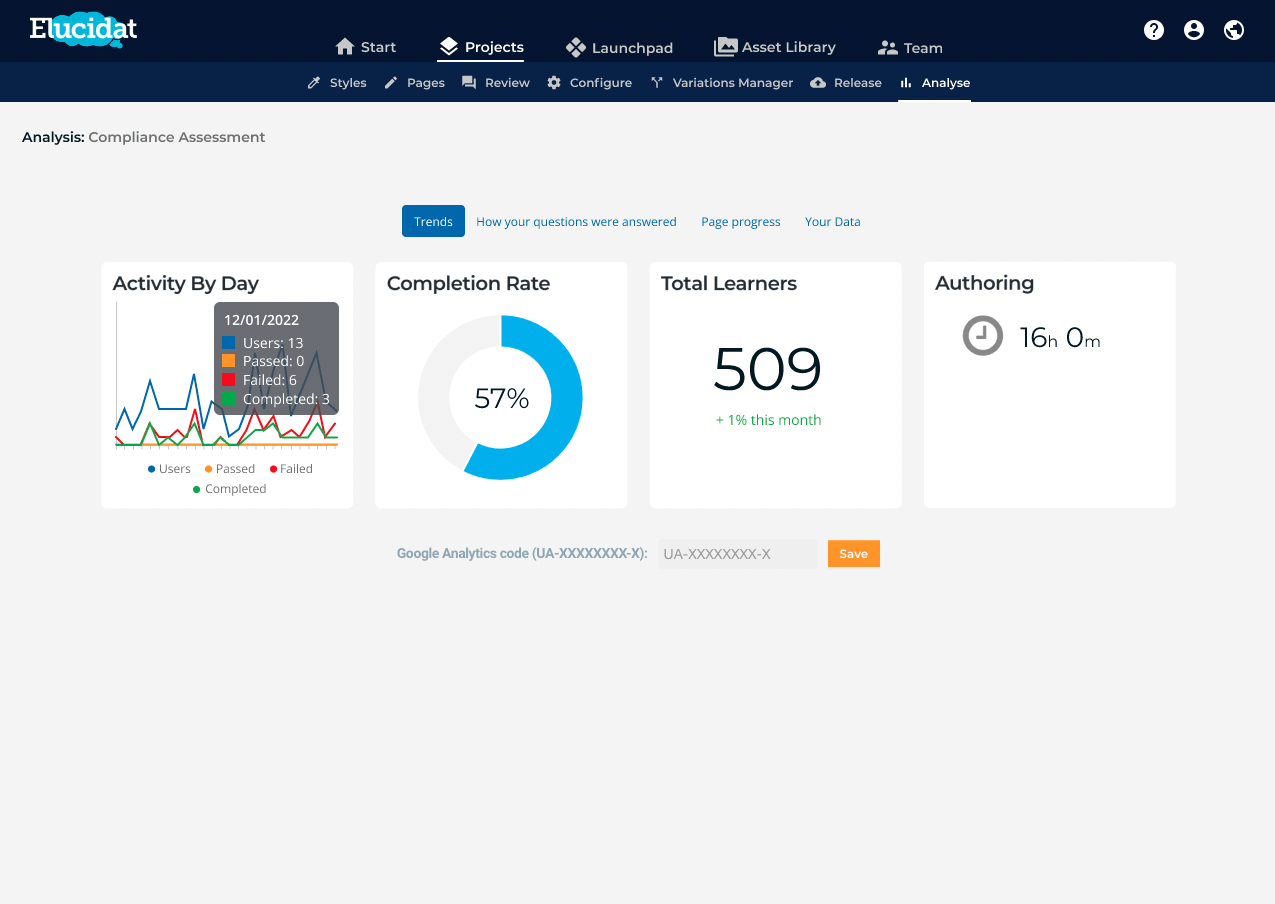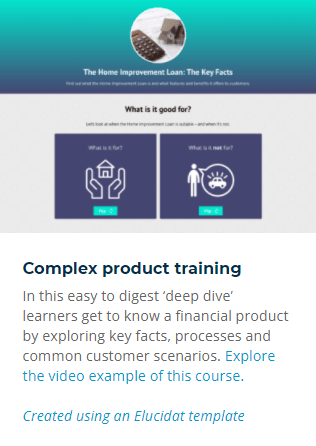Customer training programs: The complete guide
9 minute read
Providing customer training around your products or services is a fantastic way to differentiate yourself from competitors. It also boosts customer engagement and enables them to gain more value from you: win, win. But if you’re serious about providing useful training that’s as professional as the rest of your customer-facing services, you must approach it like a learning pro. Here’s how.

What is customer training?
Customer training is an initiative designed to help your customers use or access your products and services most effectively. It can cover anything from onboarding processes or product setup tutorials to helping your customer become a ‘super user’. The common objective of all forms of customer training is to help them make the most of your product or service and have the best experience possible.
In some instances, customer training also encompasses external parties such as suppliers and partners, in which case, customer training is provided to ensure they can use the product efficiently, perform demos and/or communicate the benefits of your product or service to potential customers on your behalf.
There is no right or wrong way to deliver customer training; the real key to success is ensuring that the medium you choose is tailored to the needs of your audience. Consider the demographics of your customer when creating your customer training to ensure it has the desired outcome and be sure to make it accessible and easily-discoverable.
How technologically-literate your customers are will generally correlate with the product or service they have signed up to, so bear this in mind.
The benefits of customer training program
Research from Talented Learning around the rise of online customer training programs, states that:
- 68% of trained customers use products more often
- 56% use more product features
- 87% use products more independently
Why does that matter? It means more loyal customers, gaining more value from your products and services, relying less on your staff and support teams to do so. Online customer training is on the rise for a reason – it makes great business sense. Let’s explore the benefits of customer training programs in greater depth:
1. More loyal customers
Customer training programs result in happier, more loyal customers. Why? You’re giving your customers the tools they need to succeed and empowering them to get the results they want to achieve from your product or software. Not only this, but customer training also provides additional value which makes it easy for them to justify the investment in your business and more inclined to recommend your business to others.
2. Allows your customers to use your product independently
Effective customer training can help to ease the load of your customer support team and reduce the number of individual support requests that require their attention. This allows them to allocate more time to users who may require additional support and focus their efforts on generating more sign-ups from new customers.
3. Enables you to collect feedback from your users
Tracking your customer training can help to uncover valuable insights about your product or service and how it performs. Analyzing your ‘most popular’ training resources can help you to understand what the common issues or difficulties are that your customers have with your product that you may be able to address in an upcoming product update, for example.
It’s also beneficial asking for direct feedback from your customers, as this can also inform product updates or service improvements.
You can explore lots of examples of great online customer training or read on for five ways to set up a successful customer training program.
5 ways to implement a successful customer training program
 Establish program goals
Establish program goals
Before thinking about anything else, establish what you’ll use as a success marker for your new training initiatives. What can’t your customers do now that your training will enable them to do? It’s not enough to answer that question with a statement like, “We need customers to use our product more effectively.” That’s too broad, and it would be difficult to prove if you succeeded.
A better goal would be “to enable customers to use feature X of our product.” Defining smaller objectives at this level helps in several ways:
- It forces you to think about what your or your customers’ needs really are (as opposed to a broad blanket statement that’s hard to work with).
- It begins to expose what you need to tell/show customers and what they need to know/do to improve.
- It’s easier to evaluate whether you accomplished each of these small steps after training—for example, by providing customers with a simulation they must successfully complete, by passing an online quiz or by seeing a downward trend in support requests on that topic.
- It exposes a possible program structure; each objective could form one module or one section within a larger module.
- It enables you to prioritize which training objective to tackle first, which ones will be the easiest or hardest to address and which ones your customers will appreciate most.
 Choose the right technology
Choose the right technology
There are two pieces of your elearning deployment puzzle to carefully consider:
- Content authoring tool
- Learning delivery platform
Content authoring tool
The content authoring tool is a piece of software that allows you to create the online learning content your customers engage with. Read comparisons and reviews of top elearning authoring tools to guide your decision. Here’s some key questions to ask:
- Is it easy to use? A tool that non tech-savvy staff can use enables you to get more learning titles to market more quickly.
- Does it provide flexibility and control? You want a product that allows you to easily apply your brand colors and logo.
- Can I collaborate with team members within the tool? Reviewer and tester communication is more efficient when it happens asynchronously in the authoring tool. This is far better than relying on email or other external communications.
- Can I create mobile-ready elearning? Mobile learning is important. It’s no longer a nice-to-have; it’s a must-have. More and more customers will expect access to your content via mobile devices.
- Is content easy to maintain and publish? Content that’s incorrect or out of date is no good to clients. You must be able to quickly and easily update content and get it out to customers.
- Can I localize content for overseas markets? If multiple languages are necessary for your customers’ courses, you’ll need a product that supports this feature with a minimum effort.
- Does it come with prebuilt themes and interactions? Pre-built themes and interactions optimize development times and lessen the need for specialized developers.
- Can I extract analytic data? Understanding how customers interact with your courses gives you the insight to better meet their needs.
Learning delivery platform
You’ll probably need a portal through which customers access your online learning content This could be an LMS, LCMS or another more bespoke type of learning portal.
All of these have similar basics. For example, they create course content catalogs and manage customer access logins.
But they each differ in how they achieve these basics and what extras they provide. Some features that vendors might provide that make their LMSs or LCMSs a good fit with your organization (and differentiate them from others) include:
- eCommerce functionality
- The ability to easily apply branding to custom email or push notifications sent to customers when certain events occur
- Flexible learner and content grouping features—for example, you could create customer groups and easily manage them or organize libraries of content titles and make them available only to select customer groups
- Sophisticated activity reporting
- Inbuilt gamification mechanisms like points, badges and leaderboards
The right learning platform for your customers is the one that best matches your (and your customers’) needs and workflows.
 Create useful and engaging learning
Create useful and engaging learning
How well customers engage with your training determines its success.
The biggest success driver will likely be whether the training effectively meets customers’ needs. If customers don’t think your training is useful, nothing you do will make them feel it’s a good value.
But it also needs to live your brand, look professional, entice and delight customers. This could be with it’s sophisticated simplicity or because you’ve created really modern approaches and activities.
Here are four examples of how to create elearning that delights customers:
- Scenario-based learning is a technique that engages customers through an immersive training experience modeled on real-life scenarios rather than a theoretical knowledge dump. This could be great for helping customers work out their team’s requirements for your products, for example.
- Microlearning is where you providing bite-sized learning nuggets (a small elearning event that focuses on a specific topic and takes between 1 and 15 minutes to complete) and give customers a flexible way to access specific information. This can be especially useful for time-poor customers or those in distracting environments. An excellent example is this microlearning guide from Nice Media on how to get the best from their audio and video services.
- Mobile learning events can be especially useful for customers on the move or those who don’t have ready access to desktop computers. The Utility Warehouse rolled out training to its 46,000 distributors, over 30% of whom only had access to a mix of mobile and tablet computers.
- Gamification in learning experiences engage and boost a customer’s intrinsic motivation levels through a variety of game mechanics, like points, leaderboards and badges. It’s a great way to make your learning experiences sticky and build customer loyalty.
Doing these things well and creating the most engaging learning experiences can set you apart from competitors and keep customers coming back for more.
 Deliver training to customers at the right time
Deliver training to customers at the right time
It’s important to provide training to customers in the ways that are most useful to them. For example, which of the following will your customers find useful?
- Training is provided before they use your products or services.
- Training is provided on demand, immediately prior to the customer using a feature of your service or product—i.e., Just-In-Time (JIT).
- Hints or push messages are triggered in your software products that point the customer to training when they’re stuck—for example, if the customer is spending a long time on a certain feature or using it incorrectly.
- Customers are pulled to the training (directed to support pages) when necessary.
- Training is pushed to them (i.e., hints, tips or videos sent by email).
- The training is embedded inside your software or service portal rather than a separate website or LMS.
The correct answer may be one or a combination of these models. The important thing is that the training is convenient and easy to access. You may need to pilot some training delivery models or interview a cross-section of customers to decide which will work best in your environment.
 Track and improve
Track and improve
Training programs aren’t static. The best ones evolve and continually improve.

Watching how customers access and interact with your training and evaluating how effective it is informs how you can make it better. Most modern platforms come with in-built learning analytics to help you do this, and you can find out the top ten learning data stats to track to help you monitor and build success.
Consider the following activities:
- Use analytics embedded in your software to see how customers use your products; for example, are they getting stuck in certain spots? Or are they navigating to screens/features in unusual patterns?
- Review your support requests to see where training could be created or improved.
- Compare support requests vs training taken? Is there a positive impact?
- Measure customer satisfaction to determine if users have real or perceived training needs.
- Directly ask customers what their training pain points are.
Findings from this kind of research will point you to where you can direct your next training efforts. You might also like to read this more in-depth guide to using learning analytics in your elearning.
Example of a customer training program
Head over to our Showcase page to see an example customer training program in action.
Feeling inspired? You can also find our guide to designing complex product training here.
In conclusion
There’s much more to implementing a meaningful customer training program than putting a few PDFs on a website. But if you do it well, it can really make you stand out from competitors, boost customer loyalty and gained value, and reduce day-to-day customer support overhead.
As you’ve seen here, the best way to achieve a good result is to think carefully about what training you’re going to provide, how you’re going to deliver it and how you’ll evaluate it to make future releases even better.
We can help you do it!
Want to make your online learning more effective, successful and people-centered? Join the people-centered learning pledge and become part of a community of forward-thinking learning professionals who together, can make this people-centered vision a reality. Plus, you can get your hands on the free guide and checklist!



